The 'last impressions': the elusive Dr No!
- Peter Crush

- Jul 22
- 8 min read
It's here, and finally in my collection! I've completed my lengthy quest to collect the very last impression of each of the Jonathan Cape hardback Ian Fleming Bond novels:
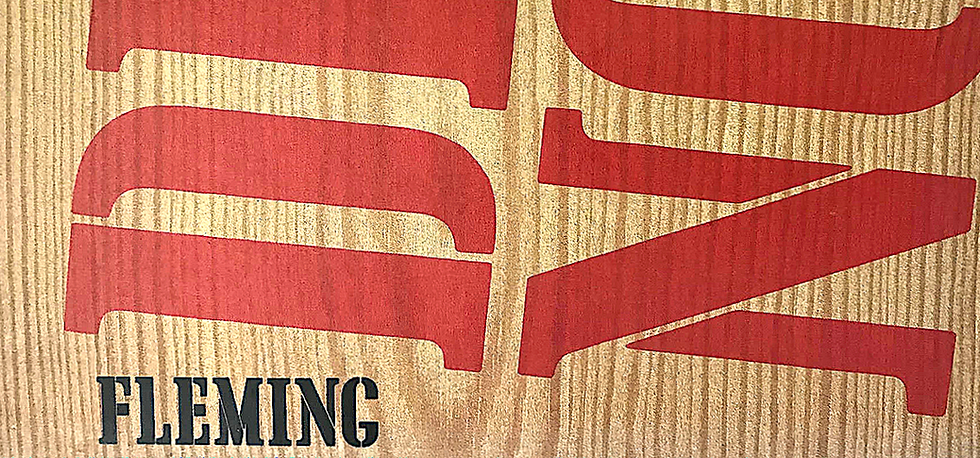
As someone who straddles being both an Ian Fleming book collector, as well as being a purveyor of fine first edition Bond books, it’s not unusual for me to be hunting down the best books to sell, but also to be on the hunt for books I want for my own personal collection.
It’s an activity that definitely comes with having to make some tough choices along the way!
Some of the books I offer for sale (and which are firmly ‘stock’), are eminently items I would dearly to ‘own’ myself.
But for the sake of showing my wares, and building a reputation for finding rare editions, I market these items to sell. There have been genuinely lots of occasions where I’ve been torn when it comes to deciding which books I source to place in my ‘for sale’ rather than ‘for keeps’ pile. Someone clearly was right when they said book collectors shouldn’t necessarily be book sellers!
But, every so often a book will surface that I have absolutely no qualms about buying because I very covet it myself. And for those who have been following my recent blogs on the Cape ‘last impressions’ (and subsequent deep dives into how the first and last impression books differ in three follow-on parts) – this is an upfront clue about what I’ve finally (last week) acquired: The very much longed-for last Cape impression of Dr No.
Those of you who read my blogs might recall that this elusive title was the sole last impression I’ve been missing. I’ve talked in the past about how the Cape ‘last impressions’ are increasingly becoming more sought after by collectors, and that anyone who wants to get in on collecting them ought to do so now, while prices a relatively cheap. These books represent a challenging pursuit for collectors to find (which makes collecting them fun), but they also want them to compliment people’s first edition sets.
Last impressions (generally) are elusive not only because print-runs of the final impressions were ridiculously small, and very nearly all went to public libraries. But for Dr No specifically, there’s fierce debate amongst collectors about the exact publishing history of this very different looking jacketed book. Ian Fleming bibliographer, Jon Gilbert, states there were only two impressions with this design of jacket – the penultimate, and final impression – the 11th and the final 12th impression of Dr No respectively.
However, there is a growing theory that the so-called 11th impression of Dr No doesn’t actually exist – aided by the fact that even Gilbert himself says a physical example of the 11th impression has yet to be documented (he was relying on the Cape ledgers referring to it for his bibliography). It means that in some quarters, the prevailing view is that the Cape archives were possibly erroneous in listing an 11th impression.
Supporting this theory is the fact that it is not unheard of for the Cape records and resulting printed-book colophons to be wrong – see my blog on Live and Let Die’s erroneous publication chronology.
If this theory is correct, it means that the 12th impression is the ‘only’ impression to feature the large Chopping-esque Tea Chest lettering against a wood grained background – and that the 12th impression is also the very final impression of this title – printed in 1983. In other words, if you see this jacket on a book, without looking at the published date, you can pretty much be guaranteed that this is the ‘last impression’.
What to look for:
As well as the new design of the jacket (which ditches the striking Pat Marriot jacket of the first ten impressions), a 1983 12th impression jacket is identified by having an overpriced sticker showing £7.50, covering the previous 11th impression jacket price of £6.50 – the £6.50 jacket of which Gilbert claims was produced in 1982. Print numbers are unknown, but thought to be very small – perhaps less than 1,000.
I pride myself in being able to hunt down most books, but this book has proved to be the most elusive after many (at least five years’ of specifically looking).
So of course, when it came up, my head was in a spin. I had to pounce fast.
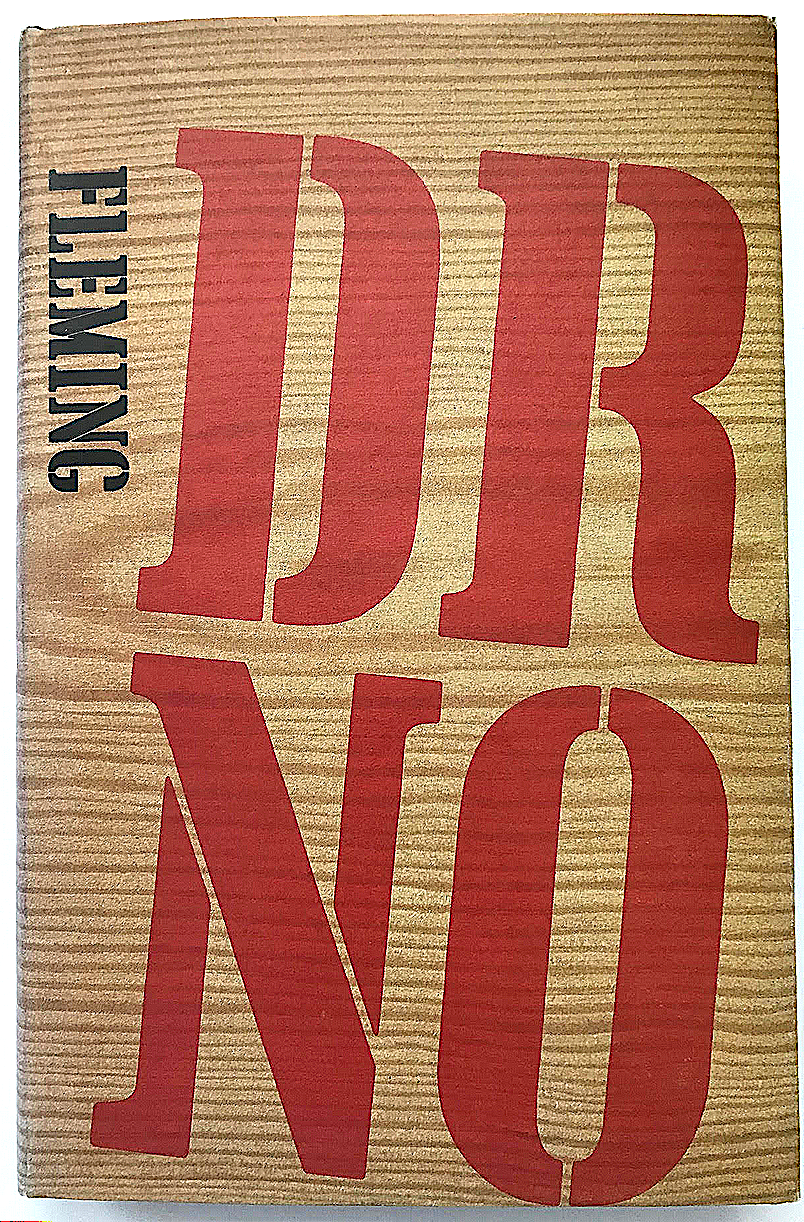
I probably over-paid for it (I don’t mind saying it cost me £130 – the most expensive single book in my 'last prints' collection), but I’ll be the first to admit that I didn’t want to experience a feeling I’ve felt before, and have previously blogged about too – that feeling of a book that ‘could’ have been yours, but has slipped through your fingers because you’ve not been decisive enough.
As I’ve also written about, we all – as collectors – have a gradually built-up sense of how regularly a particular tile we’re looking for comes up and enters the market – even if this completely unscientific; and doesn’t actually make logical sense.
But the fact I couldn't even remember the last time I'd seen a 12th impression Dr No for sale (possibly ever), was a strong motivating pressure. I had to act 'now’. Yes, I know it was an illogical assumption to think I'd never see one again, but my heart was telling my head that not doing so could leave me looking for another five years or even more.
When seller himself told me this was only the third one he’d ever handled, my decision felt a bit more vindicated.
So, there we are – I bought it and now it’s mine, and I can’t be more thrilled.
But not only does this purchase plug my own ‘missing book’ gap, what it also means is that I can finally complete the side by side comparisons of the firsts vs last impressions that I did for all of the previous books in earlier blogs. This was something I couldn’t do whilst having this key title missing.
So, what do we have?
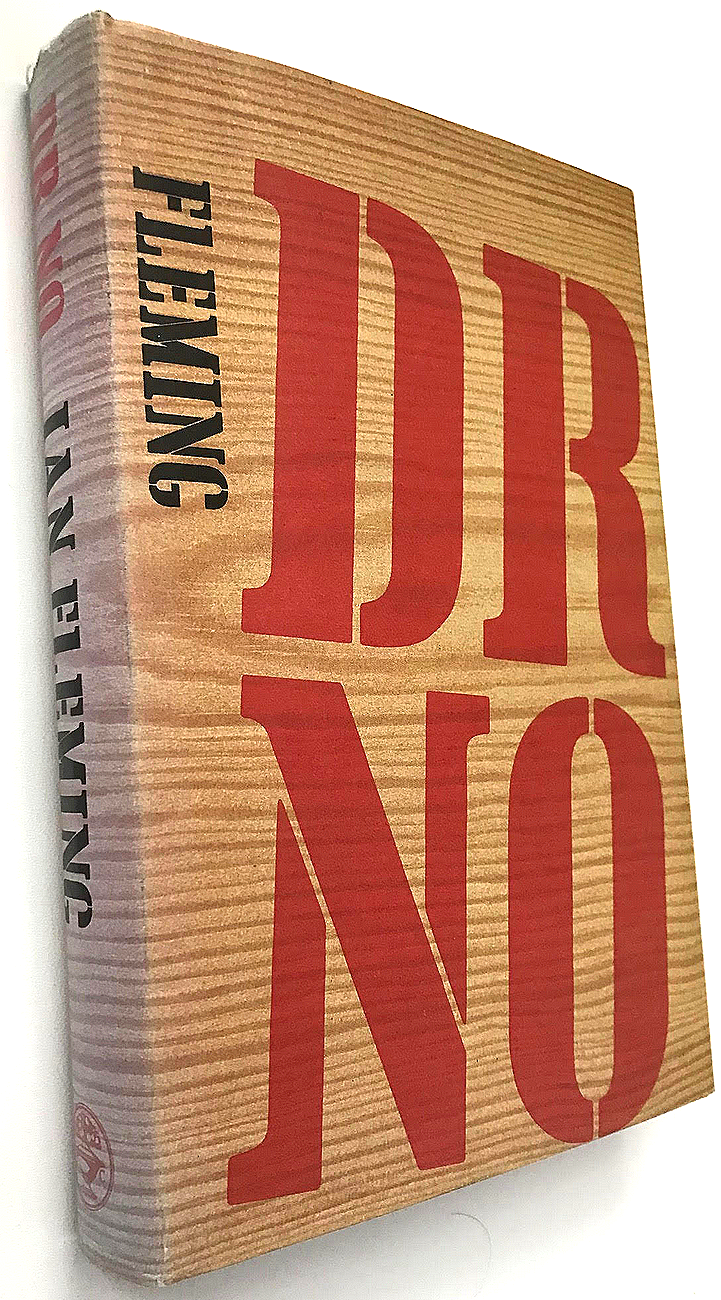
Obviously, we can see the striking typographic design, with its distinctive lettering set against a wood grain background.
Such is the design that this book suffers from inevitable spine fade. My spine is OK. Most I’ve seen in other people's collections are a bit worse (ie more faded), and some are a bit better, so I can’t complain.
As can clearly be seen in the colophon picture below, my book is the stated 12th impression from 1983, as distinct from an 11th impression, which is said to have been produced a year earlier.
Whether or not an 11th impression exists or not, I'm still not sure, however my jacket - with a higher price of £7.95 next to a clipped off price could suggest that this was a jacket with a previously lower price on it.
The problem, however, is that my jacket could just as easily have been an 11th impression one originally priced at £6.50 (which has been snipped off and replaced by a £7.95 sticker to the left), OR a repriced 12th impression jacket. So, this jacket alone is not proof that an 11th impression must exist. I suspect my jacket had at least been pre-priced and that my book was still on sale beyond 1983 - perhaps 1984 or later. Gilbert says examples are even seen priced at £8.95 (on sale circa.1986) or £9.95 (circa.1987):
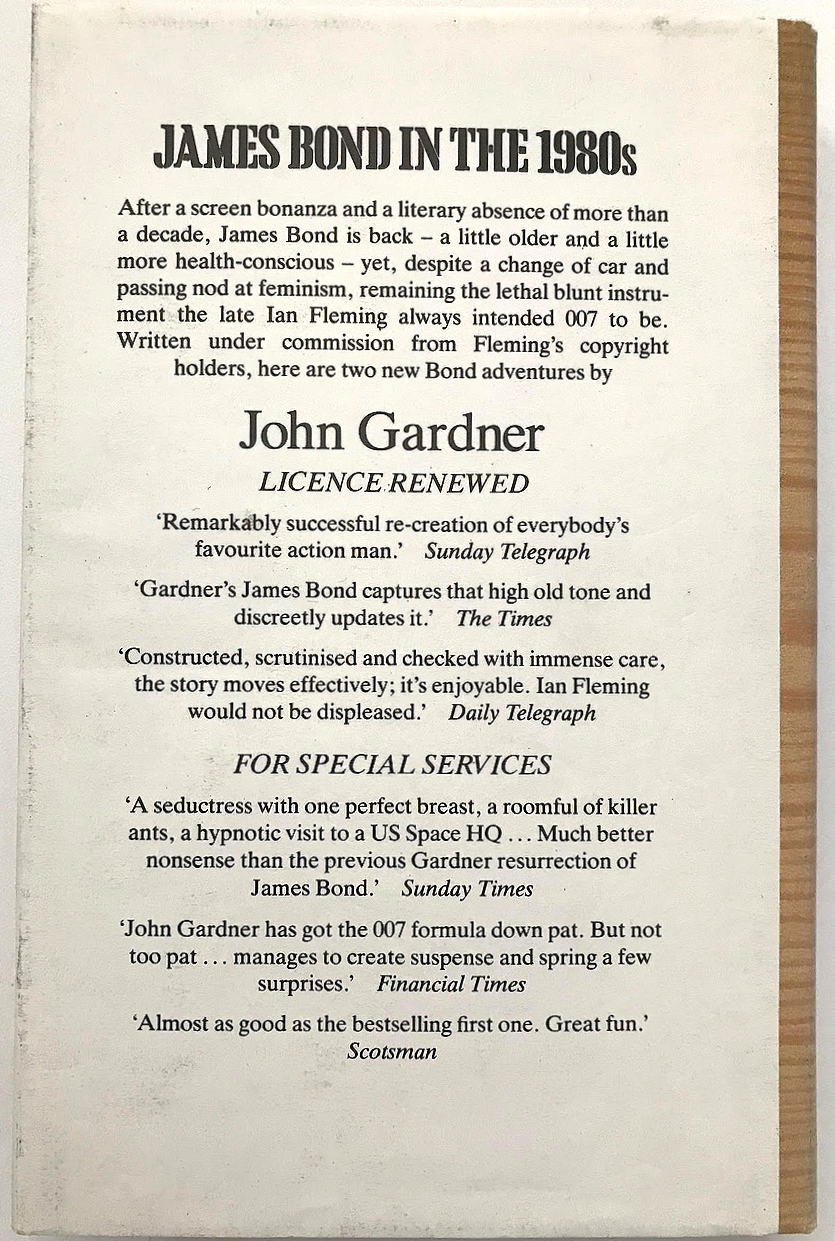
Unfortunately, the back of the jacket doesn't really give us any more clues either.
Gilbert simply says the back wrapper is printed exactly the same as the 11th impression - which is headed with the title 'James Bond in the 1980s' and a blurb for the newer Gardner books.
One thing I will say about this jacket in particular though, is that the paper is of a very white stock, and the under-side of it almost makes you think it's photocopy paper, and that this is a printed facsimile.
My jacket isn't a facsimile, but a first glance I did literally think that I'd been sent a book with a reproduction jacket (and that definitely wouldn't have cheered me up!).
What else?
What's interesting (well, to me at least), is that this particular last impression breaks a pattern of previous last impression being noticeably less tall and wide.
As the pics below show, as far as I can see, the first and last impressions (pictured side by side below), are identical in proportion, and even the lettering on the spine shows no difference (in either lettering or spacing. This is not always the case with other previous first vs last impressions:
What a closer look at the books also reveals, however, is that while the proportions of the two books might be similar, the cloth used for the boards isn't.
As the pictures below show, the first impression (in this example, it is shown with the silhouette of the 'dancing girl'), has a much finer, and tighter 'grain' to it than the last impression, where the texture is more 'gappy'. Gilbert suggests the first impression 'with' the silhouette is bound only in Fabroleen (with the first state plain boards variant being in both Fabroleen and Linson), while the last impression is the then-equivalent of Fabroleen (but which clearly looks different):
Above left - the first impression's spine (left) and the last impression's spine (right). Above middle and above-right, the last impression book is the top book shown

So, here we have it, a bit of a closer look at this very difficult to find last impression of Dr No.
In one regard this find is finished business for me. I've finally got an example of each of the 'last impressions', and so from now on, any others that I acquire will be to upgrade any that I think need to be.
But it's unfinished business in another.
Sadly, as already mentioned, what I don't think I've been able to prove is whether or not an 11th impression Dr No exists or not.
My 12th impression jacket certainly indicates that it could have been part of over-run stock from a lower-priced 11th impression (if one exists). Looked at on it is possible, but it's not 100% conclusive either.
What I think I can discount though are printing mistakes on the colophon that could cause one to wonder whether an 11th impression exists or not. Mistakes here do exists (see my blog on the 'missing' Live and Let Die impression), but from examples I've found, the stated impressions on Dr No appear consistent from book to book.
Take a look at these colophons below, from later impressions of Dr No - taken from a 6th, 9th and 10th impression:
As can be seen, all the dates are consistent throughout all three books. The two impressions that are mentioned in the top middle and top right colophons are the 4th and 5th impressions printed in January and July of 1963 (as shown in the colophon, above left), and the dates are all the same before and after this. (The top left picture - slightly cropped - actually says the second impression was in May 1958; while the third was in April 1959). The 1977 impression is the impression directly before the 11th (should an 11th exist). If we compare these three pictures with the copyright page photo of my 12th impression at the start of this blog, we can again see all the same impression dates. My 12th impression mentions a 1982 date between the 10th 1977 impression, and the 12th 1983 impression. So... be your own judge!
Maybe this all means that an even more elusive 11th impression does indeed exist - (somewhere!), and is waiting to be revealed. Maybe if everyone starts looking, then if it exists, one will finally be unearthed.
But talking of being revealed - here's a photo that's taken me a long time to finally take, and which I'm very pleased to finally be able to show.
My 'full' set of last impression books:
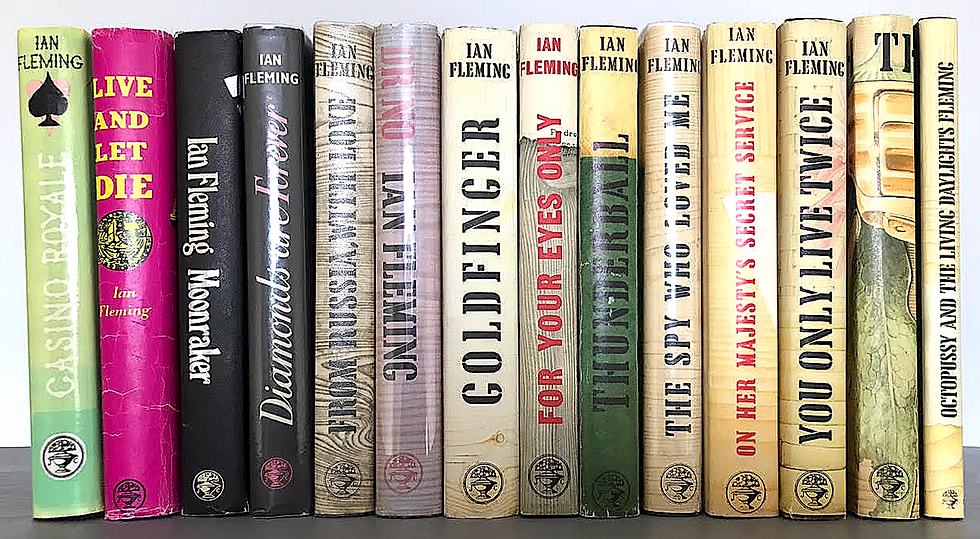











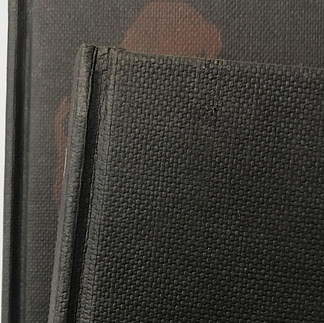











Comments